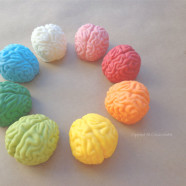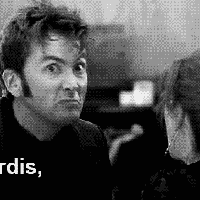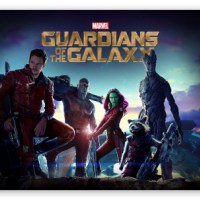When It Comes To Diversity, Brains Matter Too

Photo courtesy of Knot The Ordinary
Zombies know that brains come in different flavors. We humans, however, like to pretend that isn’t true.
In genre fiction, people who fall outside the spectrum of “normal” brain function are often portrayed as stale stereotypes that can range from borderline offensive to downright dangerous. These stereotypes aren’t always generated out of malice or for getting a cheap laugh. They persist because people lack understanding of what it means to be neuroatypical.
Being neuroatypical doesn’t mean that a person is disabled or mentally ill. A neuroatypical person’s brain isn’t necessarily broken, it just functions differently or has a different mix of brain chemicals. Neuroatypical people can lead “normal” lives. They just often need to make some adjustments (such as taking medications or finding a job with flexible hours) for their brains to reach peak performance.
Yet if we take a look at the narratives in genre fiction, lead characters are almost always neurotypical. They may struggle with bouts of depression, lose their memories, or even experience a psychotic break, but after overcoming those episodes, they return to normal. They are tourists in a mental landscape that neuroatypical people have to live with every day.
Now that isn’t to say that neuroatypical people are completely absent from genre narratives. Quite often they’ll appear as a kooky sidekick or an eccentric mentor. But more often they’re cast as the mentally unstable villain.
One can’t deny that many of the villains who appear in genre fiction have mental health issues. We can thank Batman in particular for a cast of villains that encompasses pretty much all of the Diagnostic and Statistical Manual of Mental Disorders (a.k.a., the DSM). Yet many psychologists would probably agree that Batman needs treatment just as as much as the foes he locks up in Arkham asylum, an irony that was alluded to in Alan Moore’s The Killing Joke.
The tendency to align neuroatypical behavior with villainy is understandable because anyone who enjoys causing mass destruction undoubtedly has lost a couple screws. At the same time, this tendency also reinforces the belief that neuroatypical behavior must be feared. Even when a neuroatypical person in genre isn’t a villain, they’re often portrayed as someone who is unpredictable and dangerous. Take River from Firefly. Her character was more nuanced than the average neuroatypical character. Viewers were meant to sympathize with her because she was experimented on. But her outbursts also made the crew fear her, and for most of the series, they kept their distance from her rather than including her.
In terms of neuroatypical heroes, there has been progress. Percy Jackson of Percy Jackson and the Olympiads has ADHD and dyslexia. Lou Arrendale in Elizabeth Moon’s Speed of Dark is autistic. Outside of genre, we’ve also seen a bipolar CIA agent, a President with multiple sclerosis, and detectives with Asperger’s and OCD. While these portrayals often have stereotypical aspects to them, they’re a lot more positive and realistic than the average “mad” villain who is strung up in a straight jacket after the hero catches him.
As genre fiction grows and the geek collective continues to discuss how equality can be better internalized by the community, it’s important to remember that there’s more to diversity than physical attributes. Not only should we continue to press for the hero spectrum to include characters with different skin colors, sexual orientations, disabilities, genders, and body types, but characters with different neurochemicals as well.
Doing so is important because genre fiction can be a lifeline for people who are misunderstood, for people who feel they “don’t belong.” Even if its only one book, one movie, or one episode of a television show that features a main character like you, it shows you that at least one other person values the perspective of people like you and wants to share that perspective with others. It says “You matter.”
And not just because a shambling sack of flesh might think your brain is extra-tasty.
If you really do want to try out brains with different flavors head on over to the KnotTheOrdinary Etsy shop where you can purchase tasty chocolate dipped brains in flavors such as nutella, marshmellow, and brownie. Or make all your zombie friends jealous with hand-painted rainbow brains.






















Recent Comments